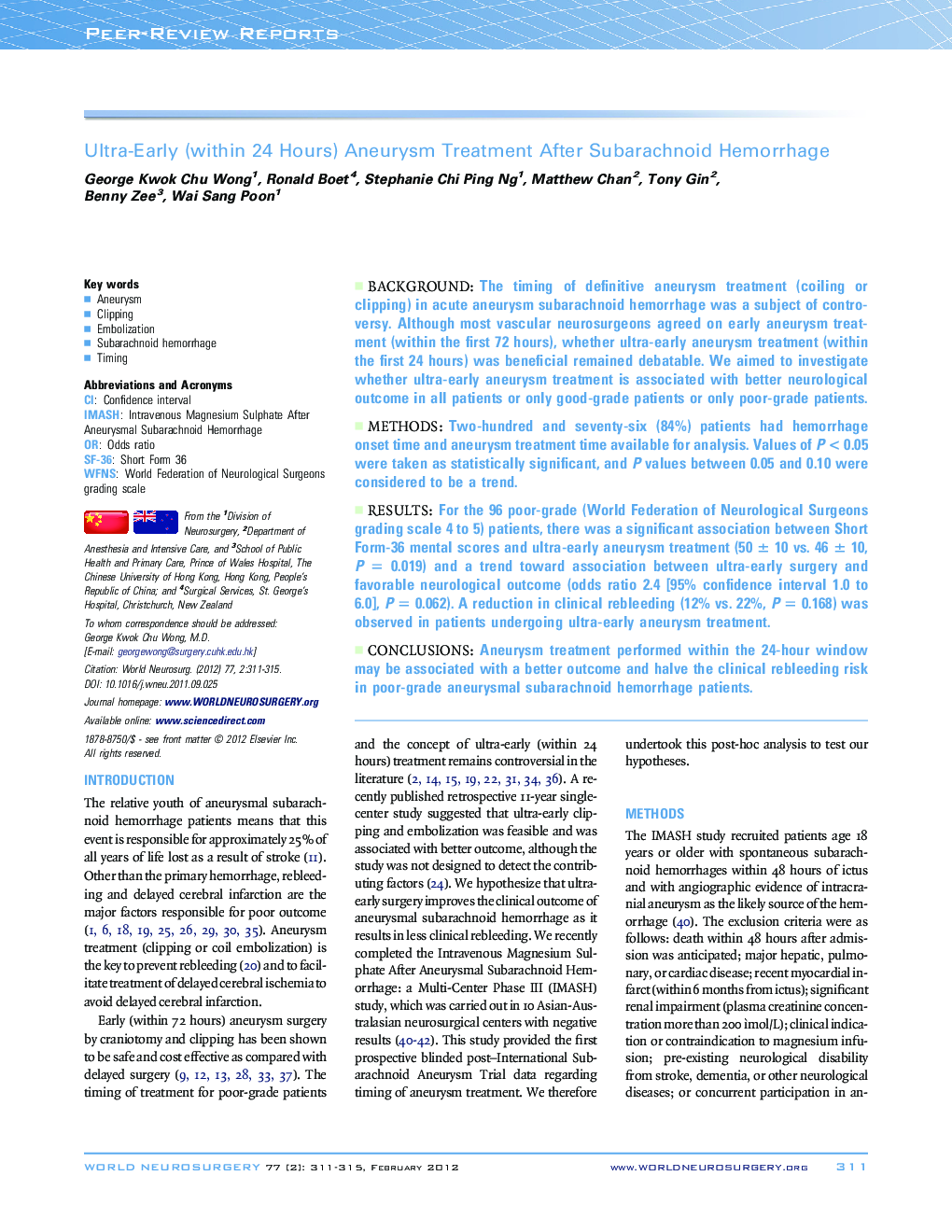| Article ID | Journal | Published Year | Pages | File Type |
|---|---|---|---|---|
| 3097216 | World Neurosurgery | 2012 | 5 Pages |
BackgroundThe timing of definitive aneurysm treatment (coiling or clipping) in acute aneurysm subarachnoid hemorrhage was a subject of controversy. Although most vascular neurosurgeons agreed on early aneurysm treatment (within the first 72 hours), whether ultra-early aneurysm treatment (within the first 24 hours) was beneficial remained debatable. We aimed to investigate whether ultra-early aneurysm treatment is associated with better neurological outcome in all patients or only good-grade patients or only poor-grade patients.MethodsTwo-hundred and seventy-six (84%) patients had hemorrhage onset time and aneurysm treatment time available for analysis. Values of P < 0.05 were taken as statistically significant, and P values between 0.05 and 0.10 were considered to be a trend.ResultsFor the 96 poor-grade (World Federation of Neurological Surgeons grading scale 4 to 5) patients, there was a significant association between Short Form-36 mental scores and ultra-early aneurysm treatment (50 ± 10 vs. 46 ± 10, P = 0.019) and a trend toward association between ultra-early surgery and favorable neurological outcome (odds ratio 2.4 [95% confidence interval 1.0 to 6.0], P = 0.062). A reduction in clinical rebleeding (12% vs. 22%, P = 0.168) was observed in patients undergoing ultra-early aneurysm treatment.ConclusionsAneurysm treatment performed within the 24-hour window may be associated with a better outcome and halve the clinical rebleeding risk in poor-grade aneurysmal subarachnoid hemorrhage patients.
